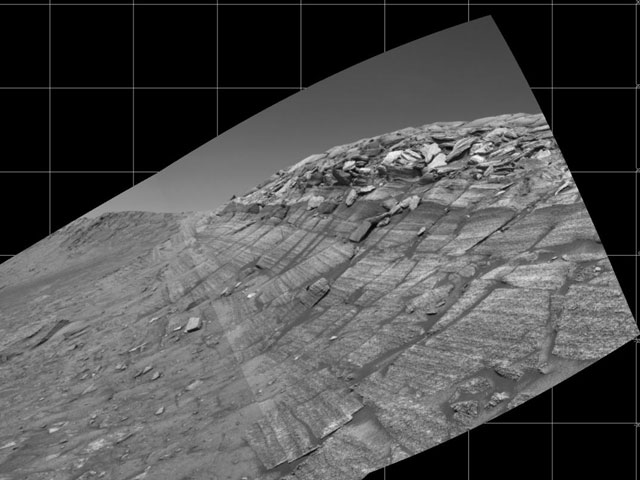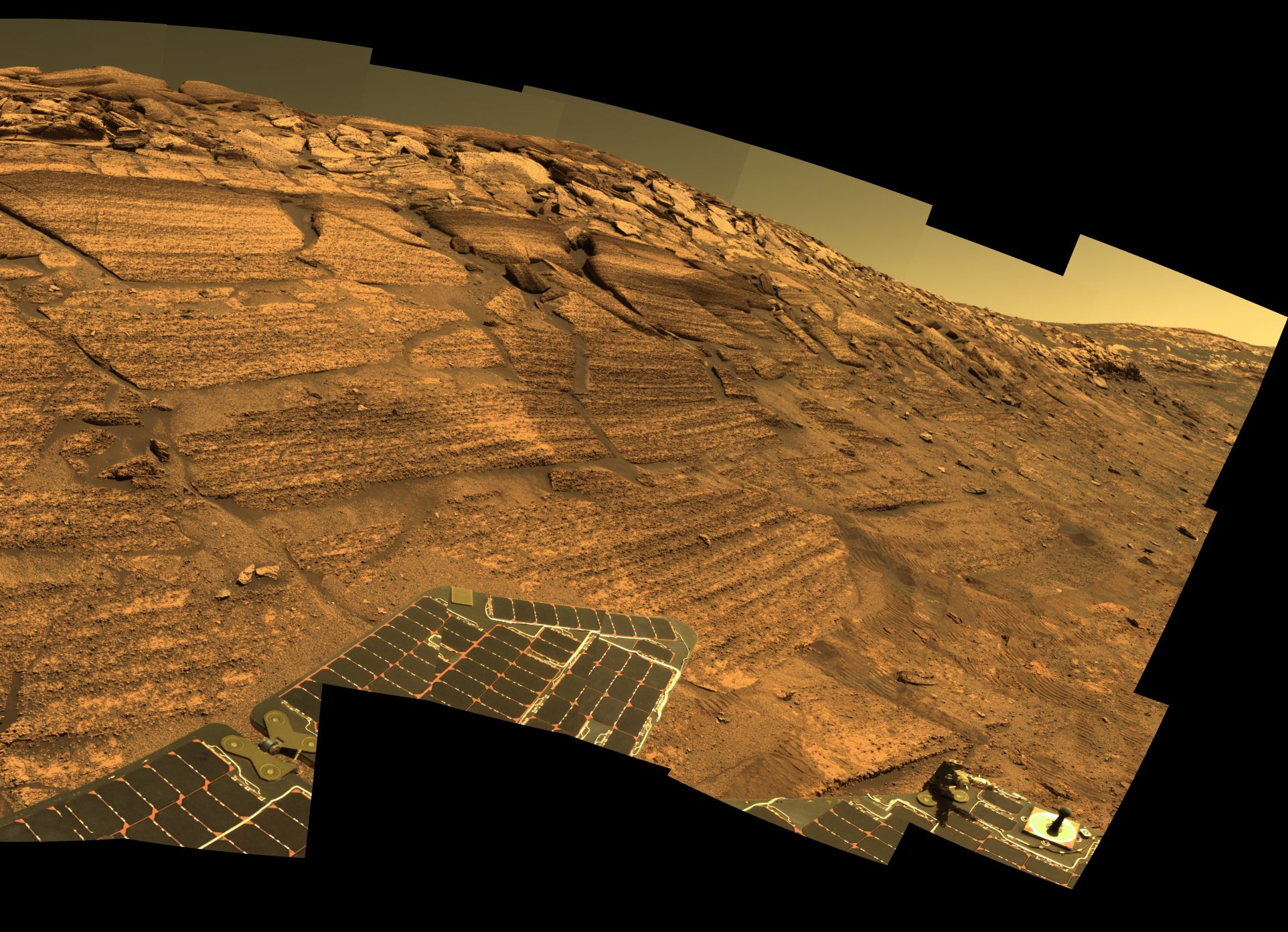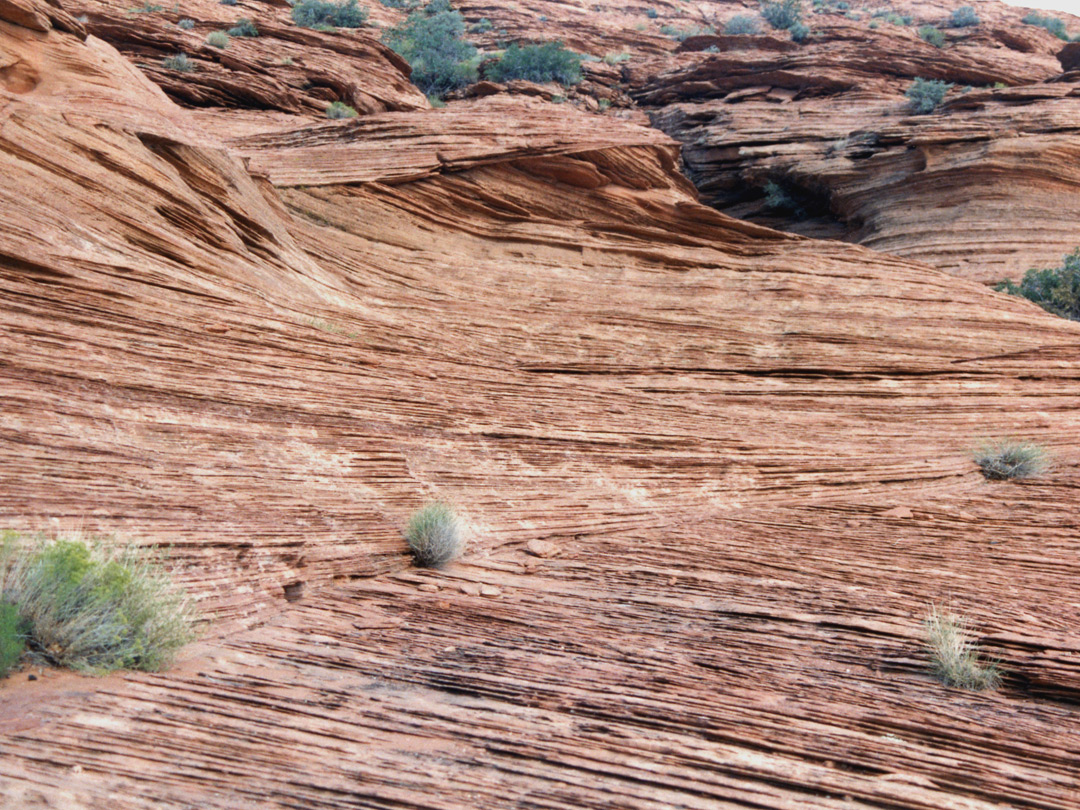This cannot be other than sedimentary rock layer.

True. That's what my bathtub looks like.
I didn't know edgarblythe was a time-honored Martian. (joke)
Those layers on the bottom look more like ring patterns that occur by ground water. The big chunks on top look like some kind of rock hash from more massive rock ejected by a meteor hit . The vertical stripes look like a combination of fractures from post ejecta settlement then they seem to be widened by water erosion. Lots of stuff going on Itd take a while to sort it out.
Is this the Rover that is poking around inside a crater?
New Release
Caption: 'Opportunity captured this view from the base of "Burns Cliff" during the rover's 280th martian day (Nov. 6, 2004). '
farmerman wrote:Those layers on the bottom look more like ring patterns that occur by ground water.
What about seasonal sedimentation in still or very slow moving water from wind deposited dust? They look a bit like varves to me.
unk, varves are lake deposited. maybe you mean l,oess.
Almostt any guess as to the origgiins of the lowwer layers would work, even loess (not glacial derived though?)
TThe top layers gotta be clasts from a meteorite hit, and then some free running water scoured the face in a vertical direction.
Any interpretations from the guys at the project ?
Varves was probably the wrong term, but it still looks water deposited to me. You look at the red beds in central Connecticut and you find similar structures. It might represent seasonal deposition from highland run off. I check into the NASA Mars web site periodically and I have found no speculation on what the photo's are showing. The Mars team seems to have clammed up, probably for good reasons.
Another possibility for those formations may be the result of high winds rather than water. If they are volcanic like we have on earth, each segment may have been formed by high winds for thousands of years.
Quote:..each segment may have been formed by high winds for thousands of years.
Probably, the hardness is quite different.
I'm too tipsy to read back and check, but I heard that this week's issue of Science magazine has more Mars info in it than any one source before it (aside from the NASA-JPL website).
I would not climb on such rocks even if they were on the Earth..
My instinct as a climber makes me avoid this.

A different planet... layered sandstone from the American SouthWest:

Rover hits one-year mark on Mars
Quote:"From an engineering standpoint, you really have to tip your hat," JPL's Matt Golombek told SPACE.com. "These rovers were designed for a lifetime of three months and now it's not clear when they're going to stop."
Where should they go next?
Congrats on science well done!
They should tell meteorites from Mars' own rocks.
Yeah, I meant it, but there should be more..